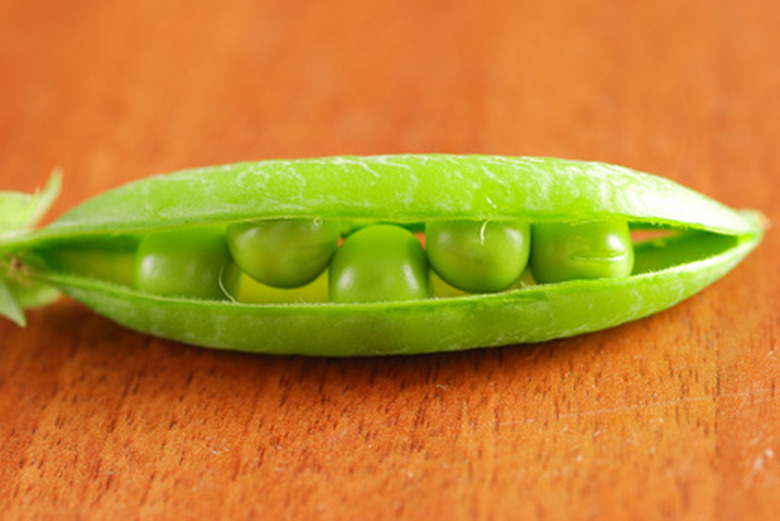Uses Of Legumes
Legumes, including peas, fava beans, soybeans, peanuts, lentils, vetch and clover, form pods that separate into halves, revealing seeds. Legume pods vary in size, shape and length depending upon the type of plant. According to the University of Minnesota Extension, there are more than 16,000 unique species of legumes throughout the world, including annual, biennial and perennial species, each with their own growth requirements and uses.
Human Food
Legumes have been a major source of nutrition for the human race since prehistoric ages. Health Guidance reports that legumes are the second largest food source for humans. Rich in protein, iron, phosphorous, calcium, niacin, lysine and amino acids, legumes provide flavor and nutrition to cuisines the world over. The seeds of legumes, referred to as pulses, can be dried and stored for long periods of time, creating a valuable food source that can be canned, pressure cooked or boiled when needed.
- Legumes, including peas, fava beans, soybeans, peanuts, lentils, vetch and clover, form pods that separate into halves, revealing seeds.
- The seeds of legumes, referred to as pulses, can be dried and stored for long periods of time, creating a valuable food source that can be canned, pressure cooked or boiled when needed.
Animal Food
Forage legumes, including alfalfa, vetch and clover, form foliage and smaller seeds that are used to feed livestock and wild animals alike. These legumes are harvested naturally, through grazing, or mechanically to create hay for animals during winter periods. In addition to the foliage, flowering legumes provide nectar for insects and birds.
Soil Food
Legume crops feed the soil by adding nitrogen and other organic nutrients during the growth cycle. In a process known as nitrogen fixation, legumes convert unusable nitrogen into ammonia, taking unusable nitrogen from the atmosphere. Once the growth cycle is complete, legume crops that are plowed under the soil in turn enrich the soil for the next season's plants. Legume crops, also known as green manure crops, can be planted during crop rotation to enrich soil and protect it from the damaging effects of wind and rain until a new crop is planted in that location.
- Forage legumes, including alfalfa, vetch and clover, form foliage and smaller seeds that are used to feed livestock and wild animals alike.
- These legumes are harvested naturally, through grazing, or mechanically to create hay for animals during winter periods.
Human Health Benefits
The consumption of legumes has been found to prevent certain diseases when they replace large amounts of saturated fats and refined carbohydrates. Oregon State University's Linus Pauling Institute states that legumes are beneficial in preventing type 2 diabetes, certain cancers and cardiovascular diseases when used in combination with a balanced diet of fruits, vegetables and lean proteins. Legumes possess low glycemic-index values, soluble fiber and folate, all necessary components for optimal health and wellness.
Beyond the Body
Legumes produce a wealth of gums, tannins, resins, dyes and essential oils that are used in the manufacture of items such as drugs, perfumes, cooking oils and colorants. These components are obtained from the bark, wood, foliage and pulses of legumes.
